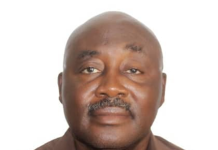Winnie Madikizela Mandela. 81 years old. Gone, grieved, honoured, glorified and demonized. Remembering icons of Black liberation struggles against white supremacist power structures is a wade through contested territory of terrifying histories.
Those histories are in Black and white. They are gendered. And they are reminders that Black women liberation leaders’ roles are recast and reduced.
In 2018, that remembering of Winnie happens via our global interconnected media; traditional obituaries and social media Tweets and FB posts. Such rememberings are a window into the myriad and problematic ways African stories are told in the hands of global white power structures.
This remembering of Winnie Mandela spans love, loss, liberation and legacy.
Love
Winnie was loved and beloved. Millions of South Africans and people from all over the world found courage and comfort through her willingness to confront and condemn a power structure that reduced their Blackness and required them to submit their humanity to the toxic cancer that was Apartheid. Apartheid was white supremacist war. War makes casualties of all of us. War requires you take sides. Wars complicate, they wound and bleed and break. They transform its warriors fighting on its battlefields. Not all transformation serves a best self; but wars do not care about a best self and warriors fight to emerge with any self, to ensure an opportunity to be remade and reconstructed after the bloodshed. All wars leave scars; some seen, some hidden. Those scars manifest in myriad ways when the war is done and life must be rebuilt from the ashes of loss, labour, betrayal, abandonment, rejection and revolution. Winnie faced all of those.
Winnie was a badass. She was brave in unlanguageable ways and she loved her people fiercely. That kind of love is restorative within a system that is reductive. Legislated hate and entrenched inferiority found little room when she faced thousands of Black South Africans with the rallying cry: AMANDLA!
I laughed when I read sentences like ‘she wasn’t perfect’ – is there somebody in this world who is? Perfection is no yardstick to measure greatness within a time of war; but instead is used as a weapon to belittle Black women. How do you language the kind of power she wielded within a system specifically designed to make you feel powerless? In honouring the many ways she was loved, it matters that the world says all her names: Freedom Fighter, Movement Leader, Movement Builder, Lover, Creator, Revolutionary, Beauty, Beloved, Betrayed, Badass, Brilliant, Wife, Mama, Grandmama; a woman pulled down and built up in multiple ways by multiple people. Loving Winnie was and is complicated, it meant – and means – doing the contortionist work required when remembering Black women liberators whose lives contradict all manner of raced and gendered ideas and whose femininity becomes questioned and criticized in this world where white masculinity rules and rages. Into this world of complications and battles fought, lost and won; on this soil drenched with the blood of the fallen, the taken and the stolen and into such spaces of complicated liberation, Winnie was loved. She was beloved.
Loss
The way her loss is being covered across global media and social media reveals how challenged we continue to be about naming white supremacy’s horrors and acknowledging the work and wonder of Black women freedom fighters whose bodies and breath fought against that horror.
Global media headlines from Reuters and the New York Times in the US to the Daily Mail in London frame this loss against a backdrop of sanitized white supremacy and demonized Black woman leadership. This framing does not grieve, it grates. This moment becomes a rewritten story of apartheid as virtually non-existent and instead recasts Winnie Mandela as a one woman horror story.
Languaging her life and reducing her life-long struggle, such global media outlets name her ‘bully’, ‘toxic’ and a ‘stain on the Mandela name’.
Black women revolutionaries are not named, recognized and lauded for defying the structures intended to bring them to their knees, lay them flat on their backs and grind them into the dust. No. Instead, Winnie’s insistence to stand, fist held high, unapologetic and unrepentant, demanding freedom, leading fearlessly, liberating and loving her people is an affront to the fragile cowardice of white supremacy’s toxic masculinity.
That framing matters
It is the measure of movement reduction; of dismissing the humanity required to fight, get up, be beaten down and fight again. And that is what Winnie did; and that was what her leadership called on millions of Black South Africans to do.
The loss of Winnie is navigated in these rocky and racist waters. That navigation is by rewriters of such history who huddle and reframe the haunting of apartheid’s horrors into white noise and white space. Global media means social media too; and into that white noise and white space are South African writers, journalists, and story tellers, fact checking, clapping back, correcting records and calling out these rewriters of history.
Distortion is the particular work of rewriters of Black liberation struggles against white supremacist structure where Black women are the central figures. That distortion is a weight that stifles grief and triggers traumas and anger. Theirs is a remembering whose aim is to hold white supremacy up as a delusional beacon of goodness.
Liberation
Winnie led a liberation movement in pursuit of freedom for Black South Africans. That fight for liberation would include multiple arrests, torture, banishment, trials and more.
Winnie was just 10 years old when apartheid officially began in 1948. Her world told her every day in every way that she was less than the white minority. That invasion turned bloody, brutal. Herded like cattle from geographical spaces, this legislated hate was entrenched with brutality.
The fight for liberation led Winnie and thousands of South Africans into the darkest of days.
Winnie spent 491 days in jail. They began at 2am in May 1969 when South Africa’s Security Police stormed her Soweto home, kicked the door down, raided her home for almost two hours and then arrested her in her pajamas in front of her two daughters, aged nine and ten who were left alone in the middle of the night.
When she was arrested Winnie had an existing heart condition. From that arrest, the first interrogation lasted 5 days and 5 nights, she began having dizzy spells on the second day and on the third the black outs started. Refused hygiene products, friends would visit Winnie and find her soaked in her own menstrual blood. Her cell was next to the assault chamber where women were tortured and beaten using iron rods, canes. She lived in that cell with a soundtrack of their screams. Winnie would later write that the screams of women being beaten from across the walls will never leave her mind.
South Africa’s notoriously brutal security police had legal powers under the Terrorism Act to arrest, detain and torture for however long they wanted. That night she was arrested and detained with 21 others. It became known as ‘The Case of the 22’. According to a paper called ‘Trial by Torture: The Case of the 22’ published by the International Defence and Aid Fund in 1970, the torture was described as being jabbed in their eyes by police, being punched and kicked for hours on end, refused sleep only for the torture to begin again. One was tortured to death.
The sadistic white security police man named in this trial was Brigadier Theuns ‘Rooi Rus’ Swanepoel. Swanepoel was the Chief Interrogator of South Africa’s notorious Security Police. Swanepoel was named again and again by political activist detainees as the most sadistic of the Security Police.
Swanepoel would also be one of the interrogators and torturers of Winnie during this detention.
According to this same paper Major Swanepoel said to Winnie during the interrogation and torture:
“I will tell you what you are, Winnie Mandela, all you wanted was money out of all this, to buy all those nice clothes you are so fond of, and you also wanted to pretend you’re a leader; and you’re nothing, Winnie Mandela…….”
Swanepoel was the same man who gave the order to fire on unarmed schoolchildren during the June 1976 Soweto Uprising killing 200. He was accused of torturing Mac Maharaj – who would become South Africa’s Transport Minister – by beating his penis with a stick which had rusty nails and hanging him by his ankles from a seventh floor window. He devised a torturing game called ‘rugby’ using Black detainees as the ball.
Swanepoel retired to the suburbs of South Africa, his pension paid for by the Mandela Government to die peacefully at home. Winnie Mandela would go on to be banished from her Johannesburg home, relocated in isolation in Brandtfort and facing humiliation and betrayal at the hands of some in her own government post the 1994 elections; and the Truth and Reconciliation Commission.
Legacy
Winnie Mandela did not forgive her torturers. She uttered no conciliatory words that could be spun by global media or reimagined as reconciliation.
At her 80th birthday, I watched video of Winnie Mandela, afro fly, rocking a beautiful white outfit, brown skin still smooth address a gathering celebrating her birthday with the same words she addressed thousands of Black South Africans fighting for liberation:
AMANDLA!
_________________________________________________________________











